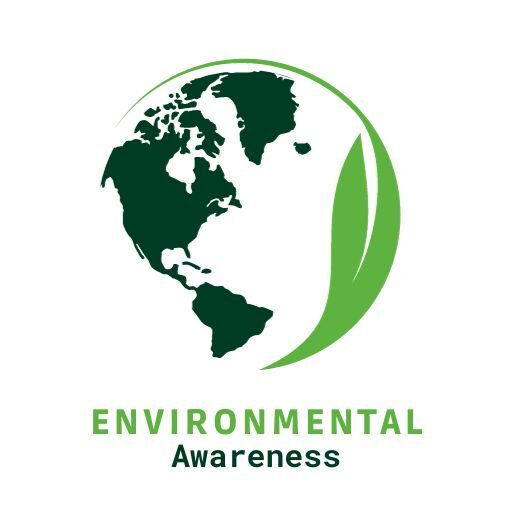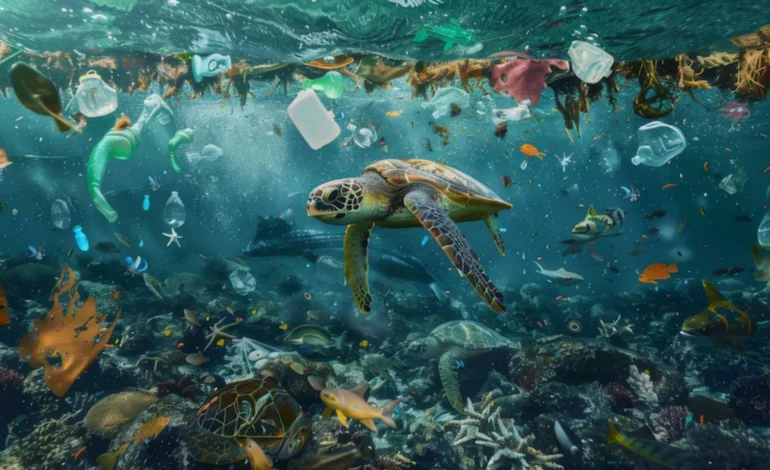
Empowering Youth Environmental Leaders: Initiatives Making a Difference
There has never been a greater pressing need to solve environmental issues in the modern world. Pollution, deforestation, climate change, and biodiversity loss are a few of the urgent problems that call for quick response and ongoing effort. One thing is becoming quite evident as we face these global issues: the kids have the key to the future. Encouraging youth to take on leadership roles in the environment is not only essential but also a potent tactic to guarantee a healthy and sustainable Earth for future generations. This blog examines the programs that are significantly improving the development of youth environmental leaders, emphasizing their value and capacity to bring about constructive change.
The Importance of Youth in Environmental Leadership
It is particularly fitting for young people to take the lead in environmental advocacy and sustainability. They bring with them a sense of urgency, unlimited energy, and new perspectives on environmental challenges. Here are a few reasons why empowering youth environmental leaders is essential:
- Inherent Stakeholders: When it comes to the planet’s future, young people have the greatest stakes. Both their lives and the lives of future generations will be impacted by the decisions made today. They are ardent supporters of sustainable practices and policies because of this innate stake.
- Innovative Thinking: Young brains are frequently less constrained by conventional wisdom and are more receptive to novel ideas. This inventiveness is essential for coming up with fresh approaches to environmental problems.
- Long-term Commitment: We are developing lifelong environmental stewards by empowering young people now. Young environmental leaders will be guided in their activities throughout their lives by the teachings and values that are taught to them.
- Peer Influence: Teenagers have the power to affect their families, communities, and peers. Their zeal and dedication to environmental issues can encourage others to get involved in the fight.
Key Initiatives Empowering Youth Environmental Leaders
- Education and Awareness Programs
Education is one of the best strategies to enable young people to take on leadership roles in the environment. Giving young people the knowledge and abilities they need to comprehend and address environmental challenges is the focus of many organizations and initiatives.
- Eco-Schools Program
The Foundation for Environmental Education (FEE) oversees the Eco-Schools program, a global initiative that attempts to equip students to be the change agents our sustainable world needs. It offers a structure for education and action on a range of environmental issues, including waste, energy, water, and biodiversity. Participating schools in the program go through a seven-step process that includes creating an action plan, completing an environmental assessment, and organizing an Eco-Committee. Along with teaching students about environmental challenges, the program motivates them to make real-world improvements to their school’s sustainability.
- Green Schools Alliance
In addition, the Green Schools Alliance (GSA) works to promote environmental leadership in educational institutions. It links and sustains an international network of educational institutions pursuing quantifiable targets for climate and environmental action. GSA offers programs, materials, and instruments that help teachers and students create more sustainable learning environments in their classrooms. Additionally, the alliance organizes contests and activities that inspire kids to work together and celebrate their accomplishments.
Youth-Led Environmental Organizations
Youth-led organizations are leading the way in environmental advocacy, demonstrating that young people are today’s leaders as well as those of tomorrow. Young environmentalists can communicate, exchange ideas, and take action as a group on these platforms.
- Fridays for Future
Greta Thunberg founded Fridays for Future, a youth-led movement that has become well-known throughout the world for its powerful climate strikes and activism. Students are encouraged by the campaign to skip class on Fridays in support of a more robust climate policy. Millions of young people worldwide have been mobilized by this straightforward yet effective act of civil disobedience, increasing awareness and putting pressure on governments to act quickly on climate change.
- Sunrise Movement
Another well-known youth-led group in the US that supports the Green New Deal and climate justice is called the Sunrise Movement. Young people are empowered by the movement to plan campaigns, participate in political activism, and demand transparency from elected leaders. Through an emphasis on political involvement and grassroots organizing, the Sunrise Movement seeks to develop a strong youth-led force for climate change.
Environmental Leadership Training Programs
For young environmentalists in particular, leadership development programs are essential to the growth of their abilities and self-assurance. Through these programs, young people can gain practical experience, receive mentorship, and take the lead on projects and initiatives.
- Program for Youth Environmental Leaders (YELP)
The Sierra Club’s Youth Environmental Leaders Program (YELP) is a leadership development initiative that gives young people the abilities and information needed to spearhead environmental campaigns and initiatives. Through the program’s workshops, field trips, and mentorship opportunities, participants can develop their practical advocacy and organizing skills for the environment. Graduates of YELP frequently go on to lead their communities and carry on their environmental activism.
- Global Youth Climate Network (GYCN)
Another program that aims to empower young climate leaders is the Global Youth Climate Network (GYCN), which is an initiative of the World Bank Group. For young people who are enthusiastic about taking up climate action, GYCN offers networking opportunities, tools, and training. The initiative creates a global network of young climate advocates by encouraging participants to design and carry out climate projects in their local areas.
Environment-Based Community Initiatives
Youth can be effectively empowered as leaders and local environmental concerns can be addressed by including them in community-based environmental projects. Through these programs, young people can put their knowledge and abilities to use in practical situations, having a noticeable impact on their communities.
- Roots & Shoots
Dr. Jane Goodall established Roots & Shoots, a global youth-led community action initiative that enables young people to improve the lives of people, animals, and the environment. Participants in the program are encouraged to recognize problems in their communities and take appropriate action to solve them. Young people gain leadership experience, educate themselves about environmental stewardship, and motivate positive change via practical projects.
- Earth Force
Another group that involves young people in local environmental efforts is Earth Force. Community mapping, issue selection, root cause analysis, action planning, implementation, and reflection are the six steps of the Earth Force method. Through this approach, youth can recognize local environmental problems, comprehend the origins of those problems, and create and carry out plans of action to remedy those problems. Through working on real-world issues, participants get hands-on experience advocating for the environment and solving challenges.
Technology and Innovation in Environmental Advocacy
Harnessing technology and innovation is a powerful strategy to empower youth environmental leaders. Young people may undertake innovative environmental projects, reach a wider audience, and amplify their voices through the use of digital tools, social media, and creative solutions.
- Digital Climate Strikes
Numerous environmental movements were compelled to adjust to internet venues due to the COVID-19 epidemic. Through campaigns like Fridays for Future, young people were able to carry out their advocacy through online digital climate strikes. Even amid lockdowns, young activists have been able to keep up the momentum and spread awareness about climate issues through online petitions, virtual events, and social media campaigns.
- Youth Innovation Challenge
The Commission for Environmental Cooperation (CEC) hosts the Youth Innovation Challenge, which inspires youth to create creative responses to environmental problems. The competition enables young inventors to realize their ideas by offering finance and support for the best initiatives. Previous winners have created solutions for problems ranging from sustainable farming methods to technologies for reducing plastic waste.
Policy Advocacy and Youth Participation in Decision-Making
Encouraging youth to participate in policy advocacy and decision-making is essential to guaranteeing that their opinions are heard and taken into account when developing environmental regulations. Programs that encourage young people to advocate for policies and participate in governance give young leaders the ability to affect systemic change.
- UN Youth Climate Conference
Every year, young climate leaders from all over the world convene at the UN Youth Climate Summit to debate and promote climate action. The summit gives young people a chance to interact with international leaders, express their opinions, and provide solutions. Young people can have an impact on international climate policy and projects by taking part in high-level conversations.
- Youth Advisory Councils
Youngsters advisory councils are being established by numerous governments and organizations in an effort to include youngsters in decision-making. These councils give young people a formal way to get involved in the formulation and execution of policy. Young Europeans are encouraged to participate in talks on climate policy and support the EU’s climate goals, for instance, through the Youth Climate Pact.
The Impact of Empowering Youth Environmental Leaders
The aforementioned programs are but a handful of innumerable global endeavors aimed at empowering youth leaders in the environmental domain. These programs have a significant and wide-ranging impact:
- Greater Awareness and Education: Young people who take part in educational programs and initiatives learn more about the complexities of environmental challenges. With this information, they can become knowledgeable advocates and agents of change.
- Enhanced Leadership Skills: Through practical projects and leadership training programs, youth can acquire critical abilities including project management, communication, cooperation, and problem-solving. These abilities are beneficial for their career and personal development in addition to environmental advocacy.
- Tangible Environmental gains: Local programs and activities with a community focus result in noticeable environmental gains. Young environmental heroes make a positive impact on the environment by planting trees, minimizing plastic waste, and conserving water.
- Policy and Systemic Change: Youth participation in advocacy and decision-making processes for policies guarantees that their opinions are taken into consideration when formulating environmental regulations. Their original viewpoints and creative concepts may result in more just and efficient solutions.
- Mobilization and Inspiration: Young environmental champions motivate their communities, families, and classmates to take up causes. Their zeal and dedication have the power to inspire others to join the cause, leading to a cascade of constructive change.
Conclusion
For the sake of our planet’s future, it is not only a noble endeavor but also a necessity to empower youngsters as environmental leaders. The projects that are featured in this blog show how young people have a great deal of potential to influence change and deal with the urgent environmental issues that we face. We can raise a generation of committed and competent environmental stewards by making investments in policy advocacy, technology, community involvement, leadership development, and education. As these young leaders step up to the plate, they will surely leave a lasting legacy that will guarantee a prosperous and sustainable planet for future generations.




